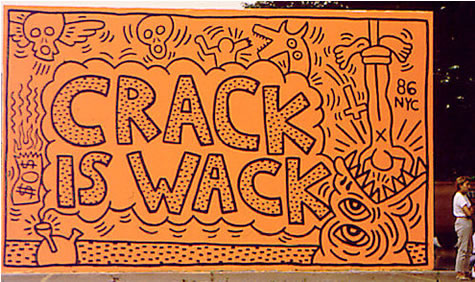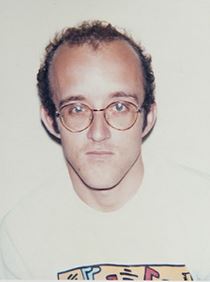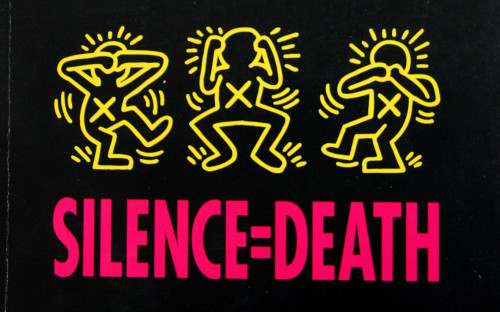Keith Haring, who specialized in contemporary art during the AIDS pandemic, was born in Reading, Pennsylvania on May 4, 1958. He was a gifted artist from an early age, drawing his first inspirations from childhood idols such as Walt Disney and Dr. Seuss.
When Haring finished high school, he went on to study commercial art. He hated it. He believed it stifled his creativity, so he dropped out of school and went on teaching himself the best he could. In 1978, he showcased his first solo exhibition at the Pittsburgh Arts and Crafts Center.

Credit: Haring.com
Soon after, he moved to New York City and found the community he had been looking for. The large gay community suited his sexual orientation. For the first time, he could bring gay themes into his work. He joined the Center of Visual Arts and soon latched onto the artistic styles of Pablo Picasso, Jean-Michel Basquiat and Kenny Scharf, to name a few.
Haring had little interest in painting in a studio environment. He preferred the drama of street and subway art, and usually incorporated in-your-face political themes. Most of his art consisted of strong lines and colors depicting distinctive figures interacting with each other in various ways.

Credit: en.wikipedia.com
At one point, he began drawing on blank subway panels, often doing 40 or more pictures a day. As a gay man watching his community decimated by AIDS, Haring experienced a sense of urgency to use his gift as fully as possible. Wikipedia quotes from Haring’s journal: “I don’t know if I have five months or five years, but I know my days are numbered. That is why my activities and projects are so important now. To do as much as possible as quickly as possible.”
Haring also set himself the goal of showing the gay community in all its diversity. He showed touching and happy relationships, but he also depicted domestic violence and rape. He criticized well-known members of the community for remaining closeted. “Silence Equals Death,” proclaims one of his most famous works.
He moved in famous circles and counted among his friends Andy Warhol, Princess Caroline of Monaco and Madonna, but he never forgot his less-affluent fan base. In 1986, he opened Pop Shop. For just a few dollars, people could purchase toys, t-shirts, posters and more with original Keith Haring designs.

Credit: fantasticaldl.wordpress.com
A short while later, in 1988, Haring faced the diagnosis he had dreaded for years; he had AIDS. He spent his remaining time putting together the Keith Haring Foundation to provide grants to needy children, especially those affected by HIV and AIDS.
His own disease progressed quickly, and on February 16, 1990, he died quietly in the city he had adopted over a decade earlier. Over 1,000 people attended his memorial service, which was held at The Cathedral of St. John the Divine.
Keith Haring lived only 31 years, yet more than 20 years after his death, his distinctive t-shirts and buttons adorn his admirers, and his posters appear in public places from libraries to restaurants. One t-shirt, purchased at a LGBTQ pride parade, featured Haring’s figures – each a different color – dancing down a bright pink sidewalk. The caption reads, “I can’t even THINK straight.”
Thank goodness for all of us he couldn’t!

 Keith Haring’s Paintings Depict Joy and Sorrow
Keith Haring’s Paintings Depict Joy and Sorrow


 Our Monthly Tip: Make an “In Case of Death” File to Ease Loved One’s Grief
Our Monthly Tip: Make an “In Case of Death” File to Ease Loved One’s Grief
 Passing of Beloved Comedian Births a New Comedy Festival
Passing of Beloved Comedian Births a New Comedy Festival















